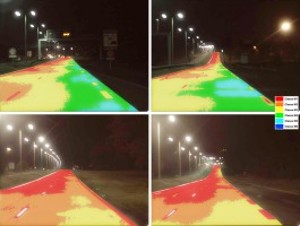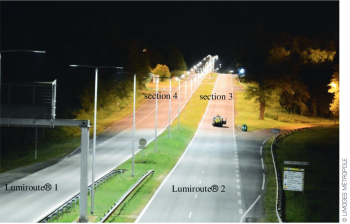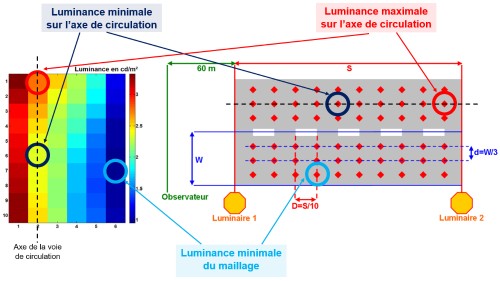- Index
- >Projects
- >Past projects
- >SPIE BATIGNOLLES MALET
SPIE BATIGNOLLES MALET Research Project
Simulation, evaluation and optimisation of the night-time legibility of urban developments: taking into account the properties of light reflection by coatings for lighting adapted to the various users of public space.
PhD student : Ms. Laure LEBOUC
Thesis director: Paul RICHARD
Co-supervisor: Florian GREFFIER (Cerema Ouest)
Co-supervisor: Vincent BOUCHER (Cerema Ouest)
Industrial supervisor: Aurélia NICOLAÏ (Spie Batignolles Malet de Toulouse)
Start thesis : 09/01/2020
Group: Information, Signal, Image and Life Sciences
Contact : paul.richard @ univ-angers.fr
Context
The development of urban public spaces is now part of a sustainable development approach in which economic, environmental and societal issues are significant and interconnected. In this context, pavement is a determining factor in the quality of public spaces, for which technical and financial choices influence the quality of use, safety, aesthetics, environment and durability.
With a view to innovation and continuous improvement of the characteristics of pavements, one of the levers of investigation lies in the possibility of optimising their capacity to reflect light. For example, the choice of lighter colours will make it possible to reduce energy expenditure linked to lighting or to deal with the problem of urban heat islands. These new types of material can also help to improve the legibility of urban space by marking on the ground the issues of road sharing, mutualisation or juxtaposition of uses.

New types of urban design based on different materials contribute to a better legibility of public space in daylight conditions. However, after dark, when public lighting is switched on, this legibility can be fundamentally questioned. The differences in light spectrum, in relation to the sun or according to lamp technologies, will not generate the same luminance and colour contrasts. A difference in coatings that is visually explicit during the day can be erased at night. On the other hand, the directional and punctual nature of public lighting can bring out phenomena of brightness, flicker and specularity that can enhance the visibility and legibility of urban space at night. It should also be noted that all these effects can be amplified depending on the weather conditions, particularly when the surfaces are wet.
Simulating, evaluating and optimising these phenomena means that a certain number of fundamentals need to be re-examined, particularly in the field of public lighting.
Issue and objective
This research project proposes to change the paradigm of how to design urban development at night by placing the properties of light reflection by surfaces at the heart of the dimensioning of urban lighting installations. It is also a question of better considering the different uses of public space by taking into account the differences in perception between users. It is also a question of considering the notions of visibility and legibility at night in different weather situations, particularly when the surfaces are wet and the photometric properties change. Finally, in addition to the aspects of visibility, legibility and energy expenditure, this research project proposes to investigate other issues such as limiting light pollution and reducing urban heat islands.
The objective of the project is to develop innovative numerical simulation tools as well as measurement methods (in the laboratory and in situ) to account for the optimisation of the reflective properties of urban pavements.







